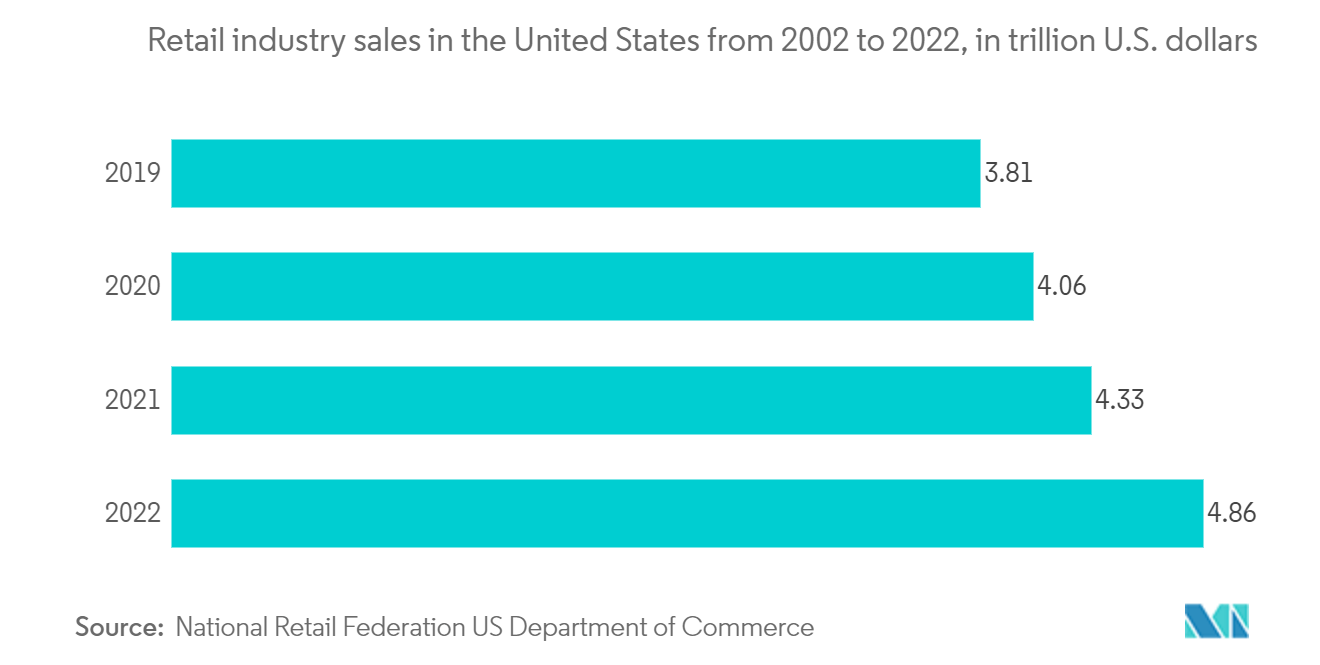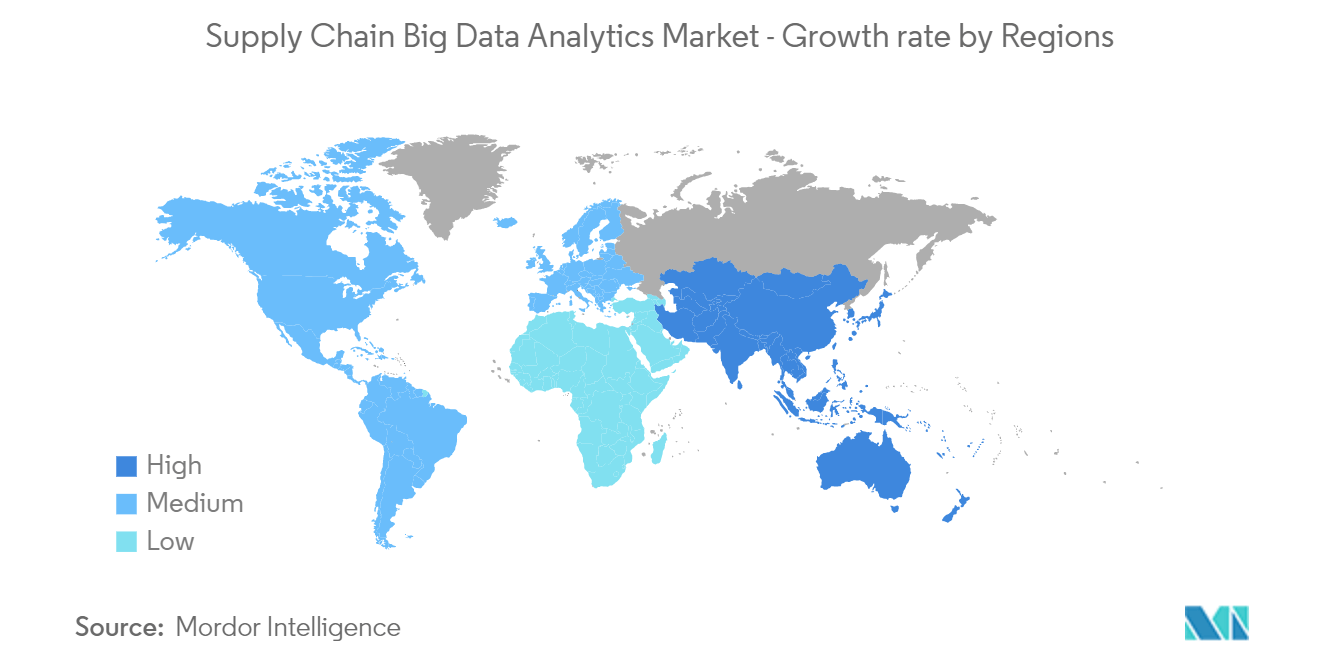Market Trends of Supply Chain Big Data Analytics Industry
This section covers the major market trends shaping the Supply Chain Big Data Analytics Market according to our research experts:
Retail is Expected to Register a Significant Growth
- The retail industry currently accounts for a significant portion of the supply chain big data analytics market, and it is expected to present numerous growth opportunities as a result of the increasing number of data sources generated by the adoption of IoT solutions, beacons, and RFID technologies throughout the supply chain. Additionally, growing retail sales are expected to drive market growth. For instance, last year, total retail sales in the United States were roughly USD 4.86 trillion, up USD 53 billion from the previous year.
- Retailers may enhance their planning procedures and demand-sensing capacities by utilizing new data sources. Blue Yonder, for instance, has created data-intensive forecasting algorithms already being used in retail, wherein 130,000 SKUs and 200 impacting variables yield 150,000,000 probability distributions each day. This has significantly improved forecast accuracy, provided a better understanding of the firm's logistical capacity requirements, and decreased obsolescence, stock levels, and excess inventory. The recent expansion of third-party cloud-based platforms such as Blue Yonder makes similar activities more available to other retailers.
- Governments worldwide have advised individuals to stay at home and are enacting social distancing regulations, increasing internet purchasing even more. During the pandemic, the demand for analytics solutions in retail has increased dramatically. Walmart, for example, developed Walmart Luminate in 2021, a platform that collects information from Walmart's consumer center and provides insights on perception, audience behavior, and channel success for the numerous brands at Walmart. In October last year, the company announced the forthcoming introduction of a Basic package at no cost to suppliers, making it even more straightforward for suppliers of any scale to engage with merchants to expand their companies. Walmart Luminate Basic is scheduled to go on the market in the current year.
- Furthermore, merchants use IoT solutions and devices to analyze consumer data, manage stock levels, and improve customer interactions. These technological advancements allow for improved monitoring of items across the supply chain and aid in acquiring a clear insight into client behavior.
- For instance, merchants have also installed a system of RFID readers into the ceiling space of the sales floors, enabling them to scan all of the items on show and offering more precise inventory visibility. American Apparel uses RFID tags and data analytics technologies to enhance inventory control, while Walmart uses Big Data analytics to improve in-store and supply-chain management.

North America is Expected to Hold Major Share
- Companies and governments in the United States are constantly working to boost their manufacturing business by increasing productivity and focusing on strengthening operations across the supply chain in the country's manufacturing industry. As the e-commerce business in the United States expands, so does the demand for effective supply chain management. According to the US Commerce Department, the country's e-commerce business grew by 10.8% in the third quarter of the last year. Online orders accounted for over 20.6% of all retail dollars spent.
- The United States is one of the world's largest retail marketplaces, and covid-19 influenced it considerably. However, getting back on track with rising numbers and augmenting growth to keep the momentum going requires advanced tech to evaluate data at that scale. According to the National Retail Federation (NRF), retail is the country's biggest private industry, accounting for USD 3.9 trillion yearly GDP and employing one in every four Americans (52 million).
- According to the US Census Bureau, retail sales in March last year were up 0.5% seasonally adjusted from February and 6.9% Y-O-Y. In February, there were rises of 0.8% month over month and 18.2% Y-O-Y.
- Additionally, E-retailers in the North American retail sector are trying to improve the consumer experience by including same-day delivery, which may be accomplished efficiently with excellent supply chain management.
- Further, regional startups are gathering funds to improve operational efficiency using Big Data analytics and other new technologies. For example, Kharon, an analytics and data company providing companies with intelligence at the intersection of world security and business, announced a partnership with Transparency-One, an international business connectivity and cloud-based platform for distribution network mapping and sub-tier tracking, in September last year. Clients may use Transparency-One to perform product-level distribution network mapping and document monitoring while also automating refused and high-risk party screenings against Kharon's sector Forced Labor database.


